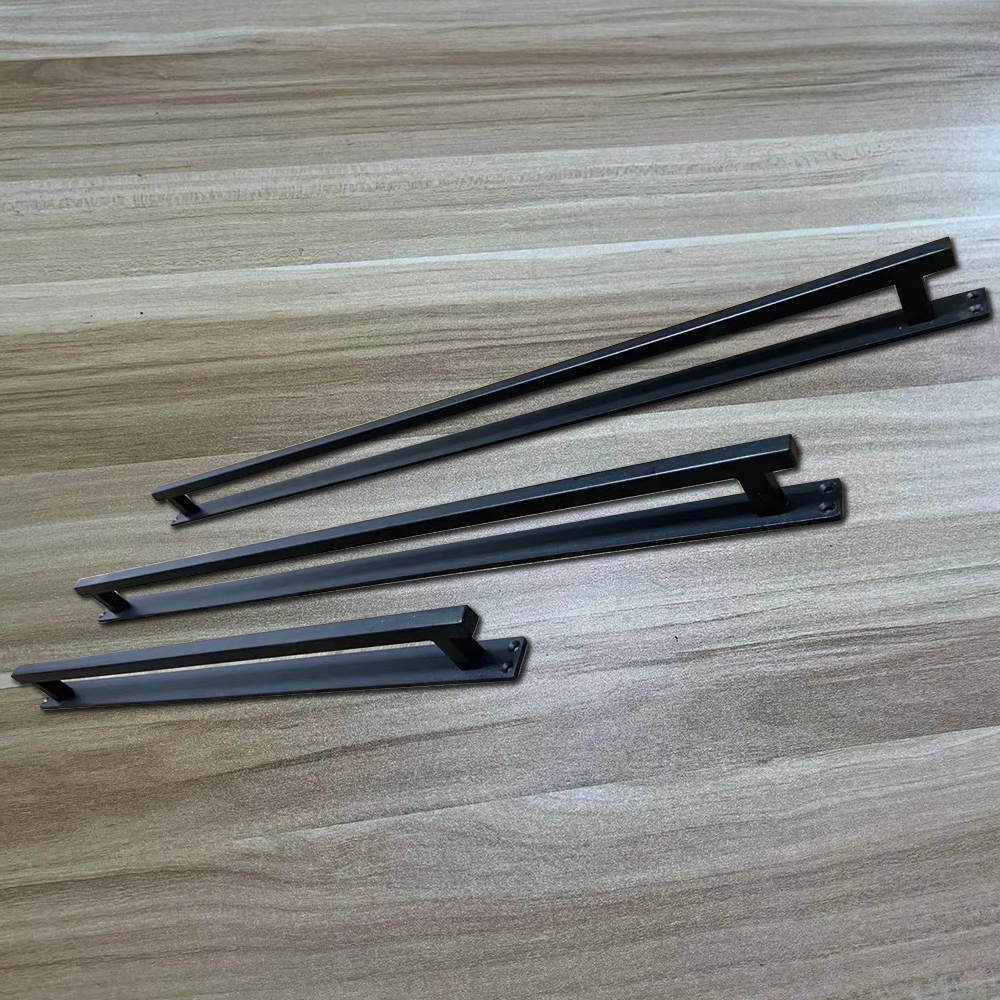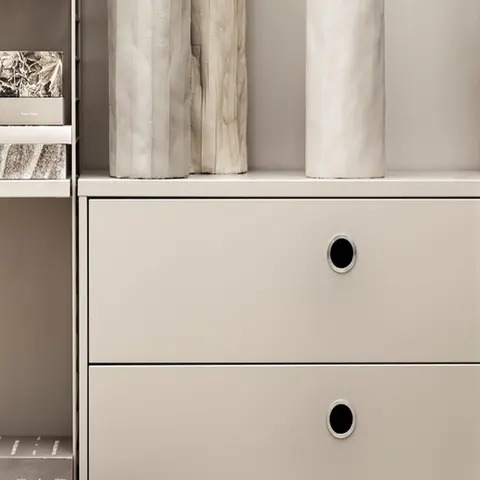Introduction
In the modern furniture industry, aesthetics and strength are no longer mutually exclusive. Manufacturers and designers are now turning to extruded aluminum furniture parts to meet the growing demand for sleek, stylish designs without compromising durability. As sustainability and minimalist design trends dominate the market, aluminum components are setting a new standard for furniture construction. From table legs to support frames, precision-engineered aluminum parts offer the perfect balance between structural integrity and design appeal.
But what exactly are extruded aluminum furniture parts, and why are they rapidly becoming the backbone of both residential and commercial furniture? This article delves into how these components are manufactured, what benefits they offer, and how they enhance both the visual and functional aspects of modern furniture.
What Are Extruded Aluminum Furniture Parts?
Understanding the Extrusion Process
At the heart of these furniture parts lies the aluminum extrusion process, a manufacturing method where aluminum billets are forced through a die to create long shapes with a consistent cross-section. Once extruded, these shapes are often further refined through CNC machining, cutting, drilling, and polishing to meet precise design and performance requirements.
The key advantages of extrusion lie in its ability to produce complex profiles with minimal waste and excellent dimensional accuracy. When applied to furniture production, this means manufacturers can create intricate legs, arms, and frames that are not only light and strong but also tailored to custom aesthetic requirements.

Types of Extruded Furniture Components
Some common examples of extruded aluminum parts in furniture include:
| Furniture Part | Function | Surface Finish Options |
| Table Legs | Support and style | Polished, anodized, brushed |
| Frame Structures | Stability and form | Powder-coated, matte, satin |
| Connectors & Brackets | Assembly and joint reinforcement | CNC finished, clear anodized |
These parts are not just structural; they are often exposed elements of a furniture piece, making their visual appeal just as critical as their mechanical performance.
Structural Advantages of Aluminum in Furniture Parts
High Strength-to-Weight Ratio
One of the most compelling reasons manufacturers use aluminum for furniture components is its high strength-to-weight ratio. Compared to steel, aluminum offers similar strength at a fraction of the weight. This makes it ideal for applications where furniture must be easily movable yet structurally sound—think of office desks, conference tables, or modular shelving systems.
The lower weight does not translate into fragility. On the contrary, extruded aluminum parts are resistant to warping, cracking, and impact damage, making them ideal for both indoor and outdoor applications.
Resistance to Corrosion and Environmental Factors
Aluminum naturally forms a protective oxide layer, which gives it excellent corrosion resistance. When further treated through anodizing or powder coating, the parts become highly resistant to moisture, UV radiation, and temperature fluctuations. This durability extends the lifespan of the furniture and reduces the need for frequent maintenance or replacement.
These properties make extruded aluminum furniture parts particularly well-suited for:
Aesthetic Appeal: Where Engineering Meets Design
Seamless, Modern Profiles
Designers often favor aluminum not just for its performance, but for its clean, modern appearance. Extruded parts allow for uniform shapes and smooth finishes that blend effortlessly into both contemporary and industrial interiors.
Polishing and anodizing options further enhance the visual appeal. Whether a product requires a mirror-like surface for luxury aesthetics or a matte, understated finish for a professional environment, aluminum provides a versatile canvas for creative expression.
Design Flexibility with Custom Profiles
Another design advantage of extrusion lies in the ability to create custom profiles. Designers can craft unique cross-sectional shapes that traditional materials like wood or steel cannot accommodate without excessive waste or cost.
From U-shaped legs to hidden cable management channels within desk frames, extruded parts make it possible to integrate both form and function seamlessly. This capability opens the door for innovative, ergonomic, and user-centric furniture design.
Sustainable and Environmentally Friendly Material Choice
Sustainability has become a defining factor in both residential and commercial purchasing decisions. Aluminum is one of the most eco-friendly materials available for furniture production due to its:
100% recyclability without loss of quality
Energy-efficient production process when using recycled billets
Long lifecycle, reducing environmental impact from disposal
In fact, most aluminum furniture components are manufactured using recycled aluminum, significantly lowering their carbon footprint compared to wood or plastic-based parts. This makes aluminum parts an excellent choice for environmentally conscious brands and consumers.

Applications Across Diverse Furniture Categories
Residential and Commercial Use Cases
Extruded aluminum furniture parts are used in an expansive range of products:
Office furniture: desk frames, chair bases, monitor arms
Residential items: dining table legs, modular shelves, bed frames
Retail displays: customizable stands, signage structures
Hospitality environments: café tables, bar stools, guest room furnishings
Each use case benefits from the durability, visual harmony, and precision engineering these components provide.
| Application Type | Example Components | Key Benefits |
| Office Furniture | Table legs, brackets | Lightweight, sleek look |
| Outdoor Patio Sets | Frame structures | Weather-resistant, corrosion-proof |
| Retail Fixtures | Signage supports | Customizable, strong yet minimal |
This wide applicability proves that aluminum components are not niche parts—they are essential tools for scaling quality furniture production across industries.
FAQs About Extruded Aluminum Furniture Parts
To further clarify common questions around these components, here are some frequently asked questions:
Are extruded aluminum parts customizable?
Yes, manufacturers can fully customize length, cross-section shape, surface finish, and color. CNC machining can also be added for precision details like holes, threads, or chamfers.
How do these parts compare to steel or wood?
Aluminum offers similar strength to steel with a fraction of the weight, and far better durability than wood. It is also easier to maintain and resists environmental wear more effectively.
Can these parts support heavy loads?
Absolutely. With proper wall thickness and design, extruded aluminum legs or frames can support hundreds of kilograms, making them suitable for workstations, heavy equipment desks, and even industrial-grade shelving.
What surface treatments are available?
Common surface treatments include:
Polishing: for reflective, high-end looks
Anodizing: for corrosion resistance and color
Powder coating: for enhanced durability and aesthetic versatility
Conclusion
The use of extruded aluminum furniture parts is redefining modern furniture design and production. These components offer a powerful combination of aesthetic elegance, mechanical resilience, and environmental sustainability, making them a top choice for manufacturers across residential, commercial, and industrial segments.
Whether you’re building a minimalist office desk, a sturdy dining table, or a futuristic retail display, aluminum parts provide the structural backbone and visual finesse that today’s consumers demand. As innovation continues in CNC machining and finishing techniques, we can expect even more design freedom and performance from these indispensable building blocks of furniture.
In summary, embracing aluminum furniture parts is not just a smart manufacturing decision—it’s a strategic move toward the future of sustainable, stylish, and resilient living and working spaces.
English
العربية
Français
Русский
Español
Português
Deutsch
italiano
日本語
한국어
Nederlands
Tiếng Việt
ไทย
Polski
Türkçe
አማርኛ
ພາສາລາວ
ភាសាខ្មែរ
Bahasa Melayu
ဗမာစာ
தமிழ்
Filipino
Bahasa Indonesia
magyar
Română
Čeština
Монгол
қазақ
Српски
हिन्दी
فارسی
Kiswahili
Slovenčina
Slovenščina
Norsk
Беларуская мова














